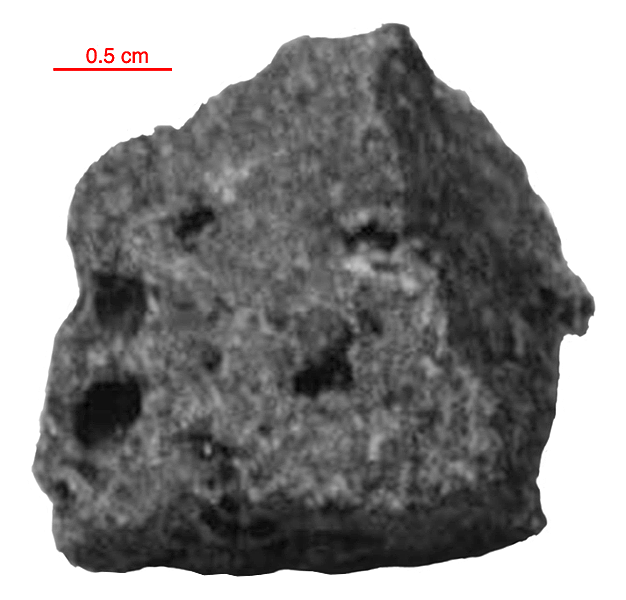
Fact sheet
15658 is a medium-grained, olivine-bearing basalt. Pigeonite ranges from 1 to 2mm in length and is twinned and zoned. Most plagioclase feldspar form stubby crystals up to about 1mm, some of which are hollow. Some radial growth of plagioclase and pyroxene is present. Olivine forms scattered anhedral phenocrysts, and smaller grains are present, many as inclusions in pigeonite. Cristobalite, fayalite and a range of opaque phases are also present.
The sample weighed 11.6 grams before analysis and has not been dated.
Further details of this and other Apollo samples are here: http://curator.jsc.nasa.gov/lunar/
The Apollo 15 landing site was in the Apennine Highlands, and close to Hadley Rille — a long, narrow winding valley. Approximately 76 kg of lunar material, including soil, rock, core-tube and deep-core samples, were returned to Earth.
This mission was the first flight of the Lunar Roving Vehicle which allowed the astronauts to venture further from the Lunar Module than in previous missions. During three periods of extravehicular activity, or EVA, on July 31st, and August 1st and 2nd, Scott and Irwin completed a record 18 hours, 37 minutes of exploration, travelling 17.5 miles, in the first car that humans had ever driven on the Moon.
Apollo 15 was launched on 26 July 1971.






